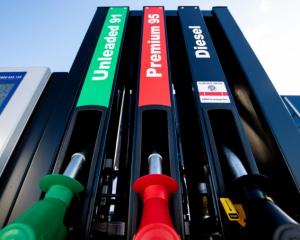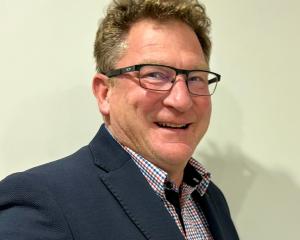Oceana Gold is expecting to spend as much as $US405 million ($NZ613.6 million) this calendar year on development and exploration, it has revealed in its first detailed report on its new South Carolina mine in the United States.
In a market update released yesterday, chief executive Mick Wilkes outlined capital expenditure, in a range of $US365million to $US405million, across all its mines: at Macraes in East Otago, Waihi in the central North Island, Didipio in the northern Philippines and the Haile development mine in South Carolina.
He also disclosed estimates of capital construction costs for Haile were up 14% on earlier estimates, rising from $US333million, from a technical report in December 2014, to $US380million, due to design changes and increased pre-production mining costs.
All four mine sites will have a share in the total $US25million-$US30million spent on exploration this year.
"We're very pleased with the company's position as we consolidate the asset portfolio this year with a key focus on delivering low-cost growth and mine life extensions.
This calendar year Oceana expects to produce 385,000-425,000 ounces of gold from the combined New Zealand and Philippine Didipio operation and 19,000-21,000 tonnes of copper from Didipio operation, at an "all-in sustaining cost'' of $US700 to $US750 per ounce.
"The company is financially strong with operating margins amongst the best in our peer group, with ample liquidity to execute on all of our objectives,'' Mr Wilkes said.
The lion's share of the total of up to $US405 million in spending is earmarked for the Haile development, which ranges from $US290 million to $US295million.
Oceana purchased the Haile development from Romarco Minerals last year for $966million (all in Oceana scrip), in what appeared to be an open-cast operation.
However, Oceana has been considering the Haile site for underground operation; replicating operations at Didipio which were fine-tuned to focus more quickly on going underground.
Oceana in 2008 had reconfigured its open-pit Macraes operations to accommodate the Frasers underground drive, which subsequently underpinned mine life extensions to some degree.
While Mr Wilkes has been bullish in the past on Haile's underground potential, the market update on Haile was relatively circumspect, saying only "A scoping study on a potential underground operation at Haile has commenced with completion expected in the second half of 2016''.
Analysts have in recent months been more upbeat than Oceana on the potential of underground operations at Haile.
Mr Wilkes said in the update "Since assuming control of the Haile gold mine in October, we have sharpened the focus there and, combined with the aggressive exploration programme planned this year, believe we will be in a strong position to unlock additional value for our stakeholders and the local communities in South Carolina.''
Some of the 14% increase in construction costs include purchase of additional loading equipment to reduce the potential for ore dilution during mining, add a run-of-the-mine pad, to allow for more effective ore blending to the mill, install a crushed ore bin to minimise dust from the crushing circuit, and install a larger flash flotation cell to improve metallurgical recoveries.
Additionally, Oceana would enhance control systems for the process plant and make significant upgrades to its IT systems.
So far, $US160million had been spent at Haile, of a total capital cost estimated at $380million.
Mr Wilkes said the Haile project team's extensive development and operations experience had resulted in design enhancements for Haile which, based on past experience, would ensure a robust and efficient project, which was on track to have the first ore through the mill by the end of 2016.
He said he was pleased to see the early success from Oceana's exploration programmes "which continue to ramp up across the business''.
"We expect to invest $US30million on exploration this year.
"That demonstrates the quality of the assets in the portfolio and the financial strength of the company as we continue to position ourselves as a leading, low-cost, mid-tier gold producer,'' Mr Wilkes said.
Aside from $US10million-$US15million exploration spending at haile, Waihi is tagged to receive $US10million to $US15million in exploration spending.
Mr Wilkes said recent drill results at Waihi continued to demonstrate significant resource expansion opportunities from high-grade underground targets, including areas Correnso Deeps, Empire and Daybreak.
The extensive exploration programme at Waihi had a primary focus on targeting resource extensions adjacent to the Correnso underground mine, and also drilling untested areas of the Waihi vein system.
Oceana drilled a total 13,031m in the second half of 2015, using four underground and two surface drill rigs, plus a further 3907m year-to-date 2016.
Exploration spending at Macraes and Didipio are both in a range of $US2million- $US3million.












